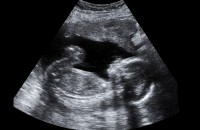Twin Talks
Prenatal Care with Twins
[00:00:00]
Please be advised, this transcription was performed from a company independent of New Mommy Media, LLC. As such, translation was required which may alter the accuracy of the transcription.
[Theme Music]
JOANNA ADAMCZAK: Prenatal care for twin pregnancies is different than for singleton pregnancies. But, does it mean that you’ll be treated with kid gloves? What kind of testing and procedures can you expect? Do you have to see a specialist?
I’m Joanna Adamczak, a perinatologist at the San Diego Perinatal Centre here to talk about prenatal care with twins. This is Twin Talks Episode Number Nine.
[Theme Music/Intro]
CHRISTINE STEWART-FITZGERALD: Welcome to Twin Talks broadcasting from the Birth Education Centre of San Diego. Twin Talks is your weekly online on-the-go support group for expecting and new parents to twins. I’m your host Christine Stewart-Fitzgerald.
Have you heard about the Twin Talks Club? Our members get bonus content after each new show plus special giveaways and discounts. Subscribe to our monthly Twin Talks Newsletter and learn about the latest episodes available.
Another way you can stay connected is by downloading our free Twin Talks app available on the Android and iTunes Marketplace. I want to turn this over to Shelly our producer to talk about our Virtual Panellists Program.
SHELLY STEELY: Parents that are interested in staying connected from home; you could follow us on Facebook or on Twitter. We also have a new Virtual Panellists’ Program. You can just use the hash tag #TwinTalksVP to join on the conversation.
CHRISTINE STEWART-FITZGERALD: Thank you. Before we get started, I’d like to go around. We’ve got a full room. We’ve got panellists here and let’s do a little quick introduction just tell us about your family and ages of your kids.
BRANDI WALLACE: Hi, I’m Brandi Wallace. I’m a mother of two spontaneous sets of twins. I have identical boys that will be four very shortly and I have fraternal boy-girl twins that recently turned one.
CHRISTINE STEWART-FITZGERALD: Awesome. My hats are off to you.
BRANDI WALLACE: It’s all I know people, it’s all I know.
CHRISTINE STEWART-FITZGERALD: Over here we have Shelly, our producer.
SHELLY STEELY: Hi, Shelly Steely. I have two boys identical. They’re names are Greyson and Sawyer and they are 15 months old.
CHRISTINE STEWART-FITZGERALD: All right and Sunny?
SUNNY GAULT: Right, so I am a mom already of two little boys not twins although they are fairly close in age. One is three, he’s name is Sayer which is close to Sawyer but not quite. Everyone tries to say Sawyer; Shelly. So, I kind of feel you on that. But, Sayer is almost; actually, he’s over three years old. Urban is my youngest right now. He is 18 months old.
I’m pregnant with identical twin girls who are due in about a month. So, everyone thinks I’m full term now because they don’t know that it’s twins most of the time. So, they’re like: “You’re ready to pop.” I’m like: “I’ve got another month.”
BRANDI WALLACE: Some of us got those comments at six months pregnant.
SHELLY STEELY: I do.
SUNNY GAULT: I’m still fortunate.
CHRISTINE STEWART-FITZGERALD: I’m your host Christine Stewart-Fitzgerald and I can say: “Brandi and I were pregnant at the same time.”
BRANDI WALLACE: Both times
CHRISTINE STEWART-FITZGERALD: Both times, I know just money. My girls just turned four and then, I have a singleton thankfully who just turned one. So, where just within months of each other; so, I’m thankful I have three. I’ve got all girls.
[Theme Music]
CHRISTINE STEWART-FITZGERALD: Before we start today’s show, let’s look at some of the headlines in the news. There was an article that mentioned how in Pennsylvania, they are some rumours that it will become illegal for people to touch pregnant woman’s bellies without consent. This would fall under the harassment laws.
So, basically if someone came up to you and touched you and you didn’t give them prior permission, they could be charge with harassment. I don’t know. What do you guys think? Is this something that’s smart? It’s a form of protection or do you think just this is just way over like the top crazy.
SUNNY GAULT: Shelly, I think it’s a great idea.
SHELLY STEELY: I’m not sure I would go actually go as far as to call the police to have somebody. But, I’m not somebody really likes to be touched to begin with. I’m not a hugger. I really have to know you before I’m comfortable coming up and giving you some space. So, it was really disconcerting for me to have people just coming up.
Luckily, it didn’t happen too often with strangers. I mentioned earlier I’m a teacher so I have a good glare. So, if they got too close; I would just kind of give them the eye and that would back them off. But, friends and family that’s fine but maybe a little over the top.
I think they need to be more awareness because I am pregnant doesn’t mean you get to touch my body at all.
CHRISTINE STEWART-FITZGERALD: It seems like when you’re pregnant, there’s this open invitation to touch and give advice and there’s this sort of warm fuzzy feeling and its like: “Who gave you permission to do that?”
BRANDI WALLACE: I’m on the other end of the spectrum from Shelly. I actually didn’t mind it. I welcomed it. I wasn’t walking around sticking my belly out and say: “Touch this.” But, at some point I did feel like the Buddha a little like everyone trying to rub.
But, I just felt like they were such miracles and such blessings that I just want to share it with anybody even if felt like they’ve could bond with me somehow. A perfect stranger in the grocery store, maybe in day I was fine with.
CHRISTINE STEWART-FITZGERALD: You’re going to share your experience with everyone.
SUNNY GAULT: It didn’t really bothered me too much either. But, I have to say that most people I feel or maybe it’s just the circles that I run in are pretty respectful of it. I feel like the message is kind of gotten out there a little bit like back off.
So, I don’t know at least the people that I come in contact with, the only people that are touching me are the people that I wouldn’t mind touching me. So, I don’t know, that’s been a really big issue for me.
SHELLY STEELY: It might be if you could deal with – if you’re somehow more crowded, here like somewhere like on the east coast where people are like commuting by foot a lot, public transportation and close basis, there’s lot more opportunity.
In Southern California, we love our cars; whether you’re over with. Fifty people surrounding you with.
CHRISTINE STEWART-FITZGERALD: We’re pretty insulated.
SUNNY GAULT: I think the bigger problem for me is: “Me touching people with my belly.” I can start to claim abuse for me.
CHRISTINE STEWART-FITZGERALD: That’s a good point.
SUNNY GAULT: Whoops, I didn’t see you there.
CHRISTINE STEWART-FITZGERALD: Excuse me. Make way.
BRANDI WALLACE: I will say though even though that I didn’t think the law will be a little silly especially how would they enforce it like Shelly said: “Would you have to stop what you’re doing and call the local police?”
I actually ask all of my friends, my very dear friends: “Is it okay if I touch or I even just announce: “I’m coming in” because I do feel there is a respect from there although my belly it was just out there. I didn’t care.”
[Theme Music]
CHRISTINE STEWART-FITZGERALD: So, today’s topic is prenatal care with twins. We’re talking with Dr. Joanna Adamczak, a perinatologist at the San Diego Perinatal Centre. She’s helped many twin mamas over the years. So, let’s see here.
Looking at the prenatal care, you’re a specialist so when the twin moms get referred to you, they already know: “This is going to be different than a singleton pregnancy.” So, internally when does that usually happen? So, when do most of the expectant moms even find out that they are having twins?
JOANNA ADAMCZAK: I usually by about 10 or 11 weeks of pregnancy, they’ll find out there’s twins.
CHRISTINE STEWART-FITZGERALD: So, that’s pretty early on.
JOANNA ADAMCZAK: Pretty early on, even before we start showing, before we even make that official announcement. From a perinatology stand point, we really prefer to see twins as soon as possible in the pregnancy because it really depends.
It’s really important to have a care for a twin pregnancy when you know what type of twins you are meaning are they identical or are they fraternal twins that cares very different for those types of twin pregnancies. So, the earlier you see a twin pregnancy, the earlier you can do an ultrasound and kind of diagnose what type of twin pregnancy it is.
CHRISTINE STEWART-FITZGERALD: So, now out of all the twin pregnancies –it’s pretty much everyone referred to a specialist or does some moms who just get their care in a regular OB?
JOANNA ADAMCZAK: I think they care can always be through a regular OB. I don’t think a perinatologist needs to necessarily care for the pregnancy. I think we prefer to at least see a twin pregnancy once or twice before an ultrasound.
A big thing that a perinatologist does is ultrasound. So, while we made out always necessarily do the full prenatal care. Seeing a perinatologist again for an ultrasound is important. But I maybe a little biased.
SHELLY STEELY: So, Brandi and I saw the same OB and he is a perinatologist. He actually specializes in just multiple pregnancies. So, when I went it for my 8th week appointment to hopefully see a heartbeat and we saw two. The whole conversation changed. It went of what kind of doctor would you like to this is the doctor you will be seeing, give him a call.
It was nice just to know that my regular doctor could answer all of the questions and he looks up on all of the most detail. But, you’re in because he saw so many special cases. He could reassure me that mine wasn’t that special.
JOANNA ADAMCZAK: Yes, there’s not to be special in a twin pregnancy to be honest.
SHELLY STEELY: So, I thought it was great to be able to see somebody who dealt with that on a regular basis. I probably wouldn’t have been this comfortable with just a regular OB with how many questions I had. But, I think it’s personal.
CHRISTINE STEWART-FITZGERALD: Some people I guess they might have a relationship with a health care provider and just want to have that continuity of care through that health care provider. But, then it sounds like they might be referred to you just for those specialty kind of test. Tell us a little bit more what’s the type of care; you mentioned ultrasounds, what are the kinds of testing do you do?
JOANNA ADAMCZAK: So, with ultrasound really it’s not just ultrasound to take a look at the baby. So, there are different types of ultrasounds that we do throughout the twin pregnancy. We’ll do what’s called a Nuchal Translucency Ultrasound in the very beginning of the pregnancy. Again, around 11 two 13 weeks of the pregnancy that ultrasound specifically to look at the back of the baby’s neck which kind of gives us a predictive a factor whether there are any chromosomal abnormalities.
So, unfortunately twins because there’s two of them at high risk we’re having genetic or chromosomal abnormalities. So, again, the earlier you could do that ultrasound, the better.
Then, after that pregnancy week; we like to do what’s called a detail anatomy ultrasound which is usually at about 20 weeks of pregnancy. That’s to look at the anatomy because twins at a higher risk of congenital anomalies either heart problems or spinal problems and that’s again not to say that all twins will but again, these are things that you want to be screened for.
CHRISTINE STEWART-FITZGERALD: I think in your office understand as well. There are besides the perinatologists themselves, there’s also genetic councillors as well.
JOANNA ADAMCZAK: Yes, we have genetic councillors on staffs which definitely help us out because I’m not sure if this is common but in general advance maternally, it’s just considered 35 years. But, in twins, it’s actually is decreased.
CHRISTINE STEWART-FITZGERALD: We’re all feeling a party all there.
JOANNA ADAMCZAK: Yes, me too. So, genetic councillors really help us to sit down with expecting parents and to let them know what types of genetic tests are available. Medicine and science is changing so quickly. Now, we only have what’s called invasive testing for chromosomal abnormality. So, CVS Chorionic Villus Sampling or an Amniocentesis which aren’t invasive; there are risks with those tests. There are risks of miscarriage.
Fortunately now, we have much better tests that are either screening that aren’t really screening tests but with twin pregnancies from a genetic standpoint can tell us about 99% accuracy that chromosomes of the babies which is huge.
CHRISTINE STEWART-FITZGERALD: That is amazing because I think prior to this; the really only way would be to take samples from the amniotic fluid.
JOANNA ADAMCZAK: Correct, the Amniocentesis or a CVS which is done early in the pregnancy at about 11 to 13 weeks again or we take little placental biopsy and then test it genetics that way.
CHRISTINE STEWART-FITZGERALD: Did anyone here on our panellists have any of these types of tests done.
SHELLY STEELY: I just have the Nuchal Translucency Screening combined with the blood work. I think they call it the Quad Screen.
JOANNA ADAMCZAK: Correct.
SHELLY STEELY: So, all the standard blood [inaudible 00:13:11] and I thought that it was great. It was really assuring because we just kind of what to know what would be happening with the pregnancy and if there was anything that we needed to know about how they manage throughout so that was really helpful breast.
You actually like you said: “Getting on the odds, getting the paper work back.” Said that there’s a one in a million chance that your babies have any kind of chromosomal abnormalities was good to know so that we can have that sense of just that we knew what was going on especially at twin pregnancy’s scary to begin with.
So, I think if there was anything else going on we really wanted to know early so we could get the best possible care.
CHRISTINE STEWART-FITZGERALD: Definitely. Now, throughout care; there are a lot of different types of tests, different stages in the pregnancies. Maybe you can tell us when do these tests take place in different trimesters and then also in ultrasound, does the frequency change?
JOANNA ADAMCZAK: With twins, yes. Frequency changes a lot with twins. In general, twins we like to do an ultrasound every month. So, if there fraternal twins so di - di twins; brother and sister, sister and sister essentially just sharing a home, the uterus. We like to see those twins every four weeks and just to do the growth ultrasounds and make sure there’s not what we call a “discordance” in the growth of the two babies.
We want to make sure that they’re within kind of 20% of each other as far as growth profiles are concerned. If you have mono-di twins which are the identical twins then those twins really increase in their frequency of ultrasounds. Those now, we like to scan every two weeks.
There are not long scans just a quick little scan to take a look at a few kinds of important parameters to make sure there is a development of what’s called the Twin to Twin Transfusion Syndrome. So, with identical twins, they share a placenta and with that they share blood vessels and sometimes these blood vessels don’t distribute blood flow equally to both babies.
So, one’s kind of takes a lot and one gives a lot. So, there is a discordance in their growth and that can be problematic.
CHRISTINE STEWART-FITZGERALD: So, when you recommend to having it in every 2 weeks that’s in the second trimester?
JOANNA ADAMCZAK: Yes, that’s starting at 16 weeks gestation. So, at 16 weeks with identical twins we’ll see you every two weeks up until about 34 or so weeks.
BRANDI WALLACE: That’s identical twins that share a placenta because not all identical do I know it’s rare. I think for some identical each have their own.
SHELLY STEELY: Yes, my identical twins have their own placenta.
JOANNA ADAMCZAK: Yes.
SUNNY GAULT: They didn’t even know. They didn’t even know with both of you that way.
SHELLY STEELY: We both know – they have their own placentas and so I thought that they told me: “They were most likely fraternal but there was a small chance they could be identical twins.” We had to do a DNA test to actually figure out that they were identical. But then, I just split early enough that they implanted separately.
JOANNA ADAMCZAK: Very rarely can you have identical not – I have seen a lot more than I thought though. I mean yours and then a couple of girls and the couple of girls in my twin group also.
CHRISTINE STEWART-FITZGERALD: Yes.
SUNNY GAULT: What’s in the water that you’re drinking?
CHRISTINE STEWART-FITZGERALD: But you didn’t know it’s interesting that you’ve been. You’re talking about this sort of like I guess unusual but here about the identical because in my case, I had well we know they’re identical but during the pregnancy, they were treated as fraternal twins.
So, they have the separate sacs and from what we were told is that: “The separate placentas have fused together.” So, that was the view. So, I actually don’t know if they shared a placenta or if they were two placentas too.
SHELLY STEELY: If mine were totally separate, they were not even close.
JOANNA ADAMCZAK: Your story and the splitting of the egg, the important part is that: “The eggs split so early on the placenta split as well.” So, if they’re identical twins with two separate placentas. Yes, even if they were “identical” you can manage them as a fraternal because the crack of the story and the important part is that placenta.
BRANDI WALLACE: I had the di/mo that it was a split so late that all we saw was a membrane that was – I called it “my spider web.” It was so thin that it actually wasn’t discovered in my early part of the pregnancy despite high level perinatology care and ultrasound videos and everything else.
So, I had what you’re discussing every two week monitoring with my di/mo identicals and then the second pregnancy with the fraternals, we can space in that a lot more.
SHELLY STEELY: We did have a lot more Sayer my Baby B; he had Velamentous Cord Insertion which means the cords are on the side of the placenta like into the placenta. They were more closely monitored for growth because they can cause concerns. But miraculously, he turned out the exact same side like his brother.
JOANNA ADAMCZAK: Again, goes to the importance of early ultrasound. As a perinatologist, I can stress that enough for twin pregnancies because it just makes everything so much easier down the road instead of seeing a twin mom for the first time – exactly, at 24 weeks and you’re sitting there having [inaudible 00:18:19] trying to figure out: “Are they identical? Are they not? What do you do?”
SHELLY STEELY: I know I have a friend right now who’s seeing midwives and she want have her first ultrasound until 20 weeks. I’m like: “Are you sure you don’t want to just check to make sure?” Are you sure?
CHRISTINE STEWART-FITZGERALD: It’s giving me palpitations.
BRANDI WALLACE: Actually, I have a question for the doctor about that. If someone desires midwifery care, is that the correct word? They find out they were having twins; is it sort of a standard of practice that the midwives will not treat them or is it a patient preference or does it all go back to the almighty depends on how the pregnancy’s going?
CHRISTINE STEWART-FITZGERALD: Who does the delivery?
JOANNA ADAMCZAK: Well, you’re speaking to a very biased person here now. Not only an OB but a perinatologist where unfortunately, I see the worst of the worst and so – hence, kind of my bias towards hospital deliveries at least I think if you’re having a midwife, I think that’s absolutely perfect but my preference with twins is a hospital setting.
BRANDI WALLACE: That’s because some hospitals have their own rules about that.
JOANNA ADAMCZAK: Some hospitals will have midwives. Where I trained, we had a huge midwifery practice that delivered tons of babies. There’s nothing wrong with them. It’s wonderful.
SHELLY STEELY: It’s hard to find midwives that will take patients who are pregnant with twins because it’s a higher risk. So, it becomes a liability for the practice because I had – you have to manage your risks and benefits.
So, I’d look into wanting midwife care and the midwife that my hospital doesn’t take twin patients and they don’t do twin deliveries in the birth centre there and that’s pretty common. Just because you really want to be about monitoring and just be somewhere in case the worst just like for me, example I had a completely normal like a boring twin pregnancy.
It could have been a really boring delivery except for the babies got stuck in and it was good that I was in the best place for that to happen that you have that hospital right there. Especially with how early twins are born sometimes.
BRANDI WALLACE: I have to say: “I fairly enjoyed all of the ultrasound pictures I got to take home.” I would highly recommend a perinatologist.
SHELLY STEELY: I have a stack it is great. We do love to scan.
CHRISTINE STEWART-FITZGERALD: Now, in terms of delivery though I mean I know in my case; so, I was seeing my OB and I was getting those and my kids are just every month going to the prenatal centre. I guess that’s because everyone thought it was there fraternal. But, so I said: “Does that mean that the perinatologist going to make the deliver?”
They said: “No. It’s your OB. Everything’s normal.” Okay, that’s cool. For me, that felt good because I’m trying to create my birth plan and I felt like that I had a little bit more time to sort of chat and that’s sort of thing with her. I don’t know. Me and Dr. Adamczak, out of all your patients, how many do you do deliveries?
JOANNA ADAMCZAK: So, our practice in general – perinatologist as a specialty in it up itself is really ultrasound and consultative. So, we don’t do too many deliveries. We will take on kind of total care, private patients when either general OB’s says: “Hey listen. This is just too complicated. The twins have growth discordance or something is going on.”
So, will take on those types of twins or we will take on pregnancies. God forbidden, your first pregnancy, you had some complication and then you were a perinatal patient and then you got pregnant again. You do have that continuity of care and as docs, we’d like that too.
So, we’ll take on pregnancies from that perspective but in general, you don’t need a perinatologist to deliver you.
CHRISTINE STEWART-FITZGERALD: Okay, that’s good to know. So, if we have a relationship with a midwife or an OB, then it really sounds like we just have to talk to them and see if they are comfortable doing that and find out about the hospital policies.
BRANDI WALLACE: The hospital where Shelly and I delivered, they have hospitalists. So, your OB doesn’t even deliver you unless they happen to be on staff at the hospital that particular day. So, you go in.
CHRISTINE STEWART-FITZGERALD: So, they’re on-call right?
BRANDI WALLACE: No.
JOANNA ADAMCZAK: Hospitalists is like somebody who is in the hospital from 7:00 AM to 7 PM and then
CHRISTINE STEWART-FITZGERALD: That’s their shift.
JOANNA ADAMCZAK: It’s all they do every day.
SHELLY STEELY: So, there are perinatologists on call – for example, my perinatologist delivered my sister in law’s baby because he was on call when she was there.
CHRISTINE STEWART-FITZGERALD: They do rotations.
SHELLY STEELY: They do rotations too but yes, it’s a big teaching hospital.
BRANDI WALLACE: It was a different concept from what I had ever heard of before which is the only reason I wanted to mention that here because I know other women listening may have a different situation. I was shocked that my own OB and then perinatologist neither of them would likely be the one delivering my children.
SUNNY GAULT: That is one of the nice things about having a caesarean. I’m just saying that I started out with having an OB that delivered my last son and I just loved her. I was heartbroken. She told me that I had to go see a perinatologist but she’s like: “With any luck, you’ll be back to see me. I can just treat you.”
So, I didn’t think it was a big deal. I think that it was just one appointment to see the perinatologist. Then, I go on to see her and luckily, I just loved her just as much as my OB and we get along really great. But she’s like: “You’re not going back to your OB.” She says: “You’re just with me.”
Every two week appointments are up and she is doing the C Section. But, again, it’s a scheduled thing.
BRANDI WALLACE: Even the scheduled C Sections at our particular hospital is not likely with your doctor.
SHELLY STEELY: So, I had an emergency C Section so I had a doctor in there with me who is taking me in the operating room and then a more emergent situation came up. My doctor left, I couldn’t – the doctor who did my C Section I couldn’t even pick her out of the line up. I honestly don’t know.
For me, I had to say nurses there. The nurse that was there before the C Section was there after I saw the same staff. So, for me; when you go to a big hospital, you kind of get
BRANDI WALLACE: I actually enjoyed it. I found a lot of benefits to it; that this is what they do all day in, day out; they didn’t just come from a consult or an office visit with someone who’s someone who’s 13 weeks pregnant.
They’re delivering babies every single day, all day and I found great comfort and I love the level of care I got. So, it’s not a wank-wank-wank situation.
CHRISTINE STEWART-FITZGERALD: So, I mean it sounds like it’s something like looking at birth plans is like: “Okay, do I want to have delivery with my OB and if it’s a crazy time in the morning – how’s that going to factor in?” Maybe, I can just plan and it’s almost more predictable if you’re okay having somebody else that you don’t know.
But, then they’re there. They’re available, you’re not waiting.
JOANNA ADAMCZAK: Always ask questions.
SUNNY GAULT: Know what the situation is for sure.
JOANNA ADAMCZAK: Know how that particular office does things.
CHRISTINE STEWART-FITZGERALD: Excellent!
[Theme Music]
CHRISTINE STEWART-FITZGERALD: Welcome back. Today, we’re with Dr. Joanna Adamczak talking about what we can expect in prenatal care with twin pregnancies and how are they different from singleton pregnancies.
I know one of the things that we tend to look at is diet. A lot of people sometimes assume – “Oh, if I have two, then I’m going to be eating for three.” But, maybe that’s not the case. What are some of the recommended dietary changes and do pregnant twin mamas get referred to dieticians or how does that work?
JOANNA ADAMCZAK: Well, pregnant twin moms have a higher rate of gestational diabetes. Surprisingly, Sunny that you didn’t get it this time
SUNNY GAULT: I know.
JOANNA ADAMCZAK: So, congratulations to you. When there is a diagnosis of gestational diabetes, we absolutely referred to a nutritionist to kind of go over glycemic index, how many sugars a pregnant mom can have. Basically, what are good sugars versus bad sugars?
So, sugars that are broken down very quickly just to kind of bad sugars like breads and so on and so forth versus things that stay in your body longer. So, we will refer to a nutritionist in that perspective but in general, twin moms should increase their diet a little bit. They should eat more kind of balanced diets with more fruits and leafy greens.
A lot of times your iron levels decrease so eating more spinach type of vegetables is important because it will increase your iron counts and you don’t want it to be taking iron pills if you don’t have too.
CHRISTINE STEWART-FITZGERALD: Yes, I’m taking two iron pills a day.
SUNNY GAULT: But, I don’t have the constipation issue.
JOANNA ADAMCZAK: You are so not fair. Everything about her pregnancy has just making me jealous.
BRANDI WALLACE: I took the pills but I didn’t have that issue.
SHELLY STEELY: It was awful. It was probably my worst pregnancy symptoms. So another word, your choice is take pills, maybe constipated or eat spinach.
SUNNY GAULT: Eat spinach, right.
CHRISTINE STEWART-FITZGERALD: We like that.
SHELLY STEELY: I’d go for the spinach.
CHRISTINE STEWART-FITZGERALD: Some of the differences too comparing twin pregnancies to singletons. I know where earlier we’re talking about just all the ultrasounds. So, I think you’ve mentioned that: “If we’re going to a perinatologist centre, there are usually much more detailed equipments that are available and you’re doing a much more detailed form of ultrasound.”
So, what’s the purpose of those detailed ultrasound and what are you actually looking at?
JOANNA ADAMCZAK: Great question, so in the beginning in the first part of the ultrasound; we really look to see what kind of a twin pregnancy it is. Then, when we do the actual detailed anatomy ultrasound, we’d looked at pretty much anything that you can think of –
• The baby is brain
• The baby’s heart
• Kidneys
• Stomach
• Bones
Pretty much every part of the anatomy and that gives us clues as to the well-being of the baby. Also, whether they are any chromosomal abnormalities which unfortunately with twin pregnancies are little bit increased. So, that initial anatomy ultrasound looks at that.
Then, as gestation progresses we do ultrasounds to look at the growth of the babies. So, twin pregnancies are at a higher risk for what’s called “IUGR.” Intra Uterine Growth Restriction because the placenta sometimes can outgrow its blood supply and the baby doesn’t get enough nutrients.
So, we’ll do these ultrasounds to measure the growth of the kidos and make sure that everybody’s growing proportionally to each other and proportionally to how far long in the pregnancy you are. 30 weeks, 32 weeks whatever it happens to be.
CHRISTINE STEWART-FITZGERALD: I think you mentioned: “It’s all a different approach to if it’s the mono or mono or mono-di or fraternal. So, you’re definitely looking for different things.
JOANNA ADAMCZAK: Yes, you’re looking for different things. In each type of twin pregnancy, you’re always looking at the growth but you’re also looking as Brandi has mentioned earlier, the Twin-to-Twin Transfusion with the mono-dis.
BRANDI WALLACE: Fluid! We look for lots of fluid pockets are around the babies. What does that mean for a mom with di/mos?
JOANNA ADAMCZAK: So, fluid is kind of one of our best predictors if there is a development of kind of unequal sharing of blood supply of the babies. Fluid in general whether it’s a twin pregnancy or a singleton pregnancy; it’s a good kind of surrogate marker for placental well-being.
So, if you’re placenta is healthy, it’s supplying enough blood to the baby; the baby is then supplying enough blood to the kidneys and with kidneys then you pee. Amniotic fluid is essentially baby pee.
SHELLY STEELY: So, my babies are peeing a lot.
JOANNA ADAMCZAK: There you go. Good babies. Kidos are smart inside. So, just like all of us when we’re sick, our bodies out preferentially shunt blood to the most important parts of our bodies, your heart and your head. Your kidneys unfortunately are not very important.
So, when there’s low fluid that can be a sign or clue that something is going on with the pregnancy, with the placenta. So, looking at fluid volumes as Brandi had said is very important in both types of twins but especially in mono-di.
CHRISTINE STEWART-FITZGERALD: You guys have had a lot of different tests as well. I’m looking over here at Sunny and so, you’re getting these- every couple of weeks as well.
SUNNY GAULT: Every two weeks looking for the fluid. Also measuring the babies to make sure one isn’t much bigger than the other. Both are within normal ranges. Then, the other thing that’s different with this on after my perinatologist does all of that then there’s also the vaginal exam with the one.
JOANNA ADAMCZAK: Transvaginal Pro!
SUNNY GAULT: There you go. I just to check out the cervix to make sure that’s nice and long.
SHELLY STEELY: She says: “I have a very beautiful cervix.”
JOANNA ADAMCZAK: My patients too. But, you’ve never heard that before.
CHRISTINE STEWART-FITZGERALD: Way beautiful.
SHELLY STEELY: So, with a singleton pregnancy; they only deserve extracts maybe towards the end to see if there’s any chance that they’re dilating it all. So, it was kind of funny for me talking to people who are pregnant with singletons because I had cervix text up until 34 weeks.
Then, I didn’t get them anymore because they could already see what they needed to see and scheduled that. My friends have the other – they got the cervix text at the end. You’re looking for a nice long closed cervix.
BRANDI WALLACE: Yes, with singletons we’ll check the cervix once at about the 20 weeks scan. We’ll check everybody’s cervix at 20 weeks IUGR, Intra Uterine Growth Restriction – what would it tell you if you saw that on the ultrasound?
JOANNA ADAMCZAK: So, IUGR again is really – it tells us two placentas not working well. That something is going on whether it’s the placenta that just sometimes didn’t implant correctly; as the pregnancy was developing early on can be a marker that mom has high blood pressure, has something called preeclampsia or gestational hypertension which can affect the blood vessels in the placenta and turned affect the amount of blood going to the kido. Babies are smaller and they’re growth restricted. So, that becomes problematic.
BRANDI WALLACE: How would you treat it?
JOANNA ADAMCZAK: So, it’s really dependent on the gestational age. So, the treatment really changes if a pregnancy is greater than 34 weeks or less than 34 weeks. After 34 weeks, whether it doesn’t matter what type of twin pregnancy you are if there is evidence of growth restriction, we may talk about delivery options or we may talk about more intensive surveillance meaning in hospital admissions where we do instead of twice a week testing.
We do daily testing; they kind of show us if a baby is in any type of distress and that needs a delivery. But, less than 34 weeks, we try to do everything possible to keep a mom pregnant as long as possible.
CHRISTINE STEWART-FITZGERALD: So, long is good. Well, thanks so much Joanna for joining us today. For more information about: “Prenatal care with twins” or for more information about any of our experts or panellists, visit our episode page on our website. This conversation continues for members of our Twin Talks Club.
After the show, Dr. Adamczak will talk about: “When twin moms should start discussing birth plans with their provider.” For more information about the Twin Talks Club, visit our website www.TwinTalks.com
[Theme Music]
SHELLY STEELY: So, we have a question from one of our listeners came in on our Facebook page. This is Shelly from Arizona. She says:
“My twins share the same placenta and I was told that there is risk of Twin to Twin Transfusion. What exactly is that?”
-Shelly
DR. SEAN DANESHMAND: Hi Shelly. I’m Sean Daneshmand. I’m a Perinatologist at the San Diego Perinatal Centre. Excellent question, so when your babies share one placenta in about 10 to 15% of the time, they are at an increase risk of developing Twin to Twin Transfusion Syndrome.
That’s when these pumpkins are when they’re sharing the same placenta, they share blood vessels as well. If one baby gives more blood to the other, that’s receiving back that can cause to a twin to twin transfusion syndrome. The management of this depends on the timing of the diagnosis. So, if the Twin to Twin Transfusion is suspected for example at 16 weeks then this requires usually surgery.
So, you will be referred by your obstetrician to a perinatologist and the perinatologist [inaudible] to fatal surgery centres. For example, in Los Angeles or San Francisco, Florida and what they do – the best treatment for this is laser treatment.
So, there are different stages of Twin to Twin Transfusion Syndrome depending on what they see remember again, if one baby’s giving more blood to the other, that baby get smaller. That baby stops peeing; the bladder gets much more smaller or nonexistent. You can’t see it. Everything at ultrasound that’s fluid filled or blood filled is dark.
So, if you don’t see a dark spot where we want to see the bladder and not much fluid and we see this baby much smaller than the other or they starting to show that; we suspect twin to twin transfusion. So, depending on for example – the bladder, the fluid, what the blood flow looks like within the umbilical cord as this going from baby to placenta. These pumpkins may need surgery to cauterize the communicating vessels. So, it allows for both babies to be growing well.
If the diagnosis is made for example at 32 weeks, so much later the treatment is much easier. You can deliver. You get prepped. You get Betamethasone to perk up our baby’s lungs and they get delivered earlier.
Your doctor is right on this is something that they look for that’s why you’re going to have very frequent ultrasounds every two weeks looking for this and looking for just signs of potential growth restriction in one of your angels.
CHRISTINE STEWART-FITZGERALD: So, that wraps up our show for today. We appreciate you listening to Twin Talks. Join in on the discussion by posting your comments on the Twin Talks Facebook Page or calling our voice mail at 619-866-4775.
Don’t forget to check our sister shows:
• Preggie Pals for expecting parents
• The Boob Group for moms who breastfeed their babies
• Parent Savers an online support group for the new parents.
Next week, we’ll get: “Tips from getting your newborn twins to sleep.” This is Twin Talks, parenting times two.
[Disclaimer]
This has been a New Mommy Media production. Information and material contained in this episode are presented for educational purposes only. Statements and opinions expressed in this episode are not necessarily those of New Mommy Media and should not be considered facts. Though information in which areas are related to be accurate, it is not intended to replace or substitute for professional, Medical or advisor care and should not be used for diagnosing or treating health care problem or disease or prescribing any medications. If you have questions or concerns regarding your physical or mental health or the health of your baby, please seek assistance from a qualified health care provider.
SUNNY GAULT: New Mommy Media is expanding our line-up of shows for new and expecting parents. If you have an idea for a new series or if you’re a business or an organization interested in our network of our shows through a cobranded podcasts, visit www.NewMommyMedia.com .
[00:38:28]
[End of Audio]











